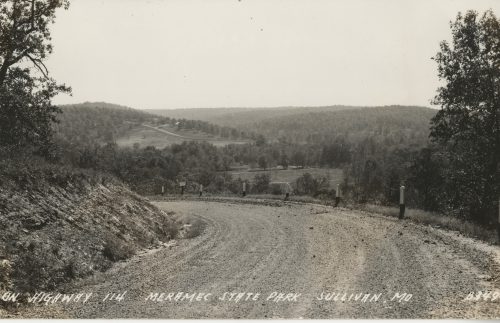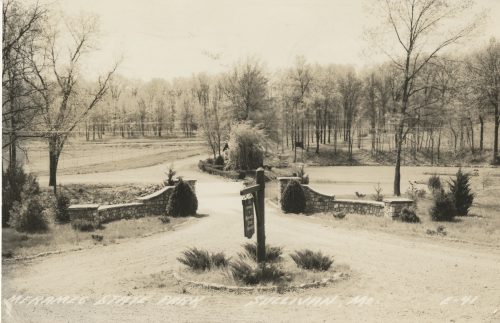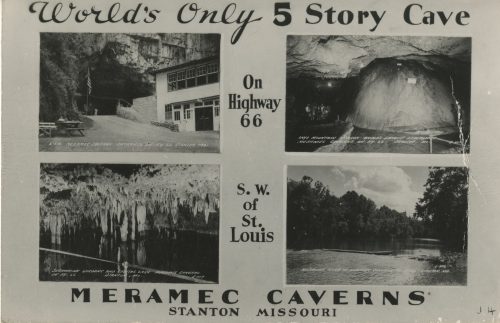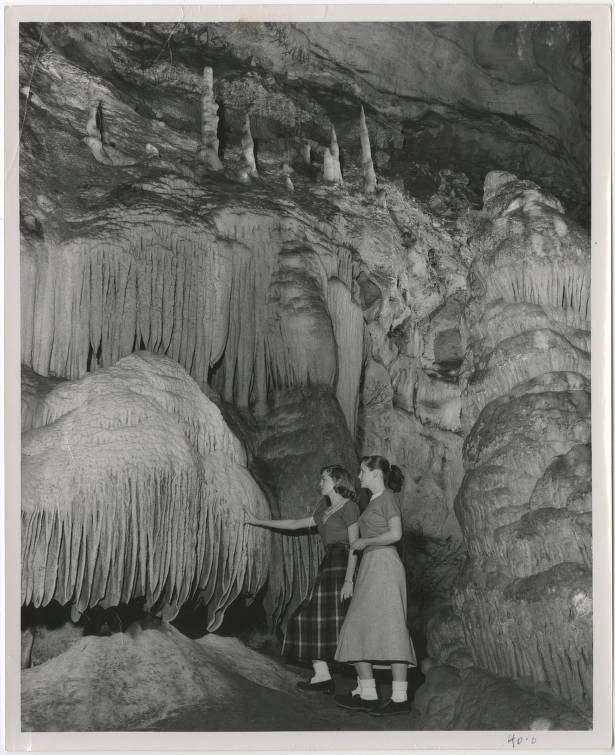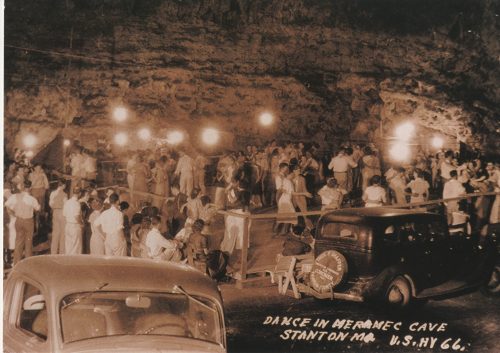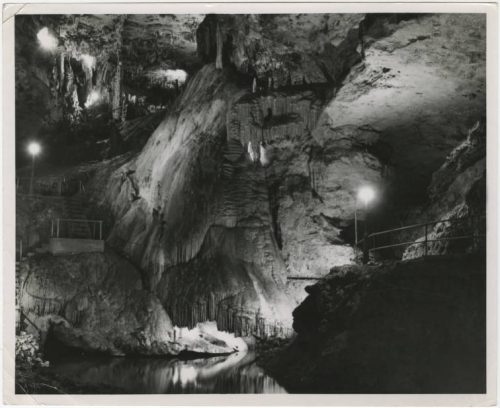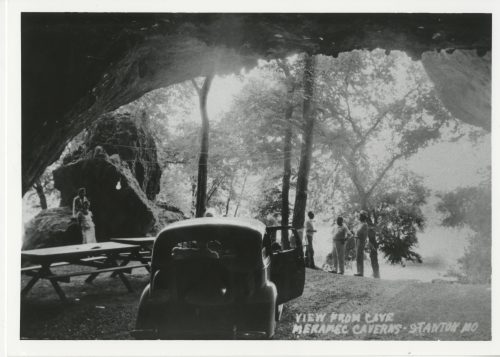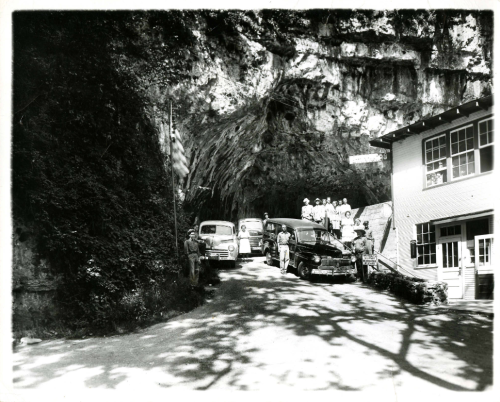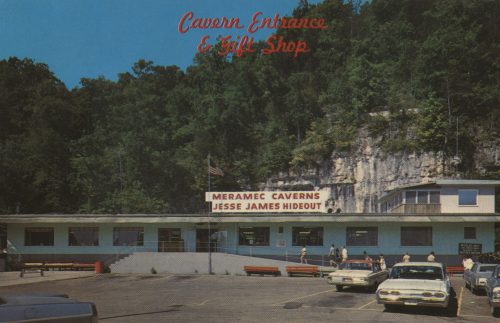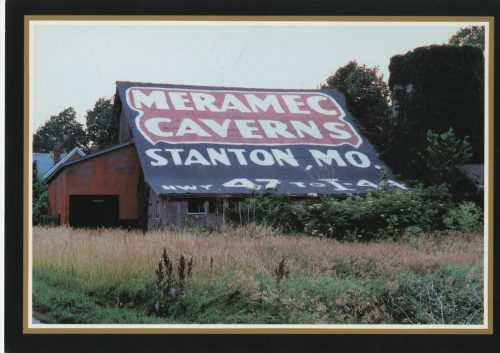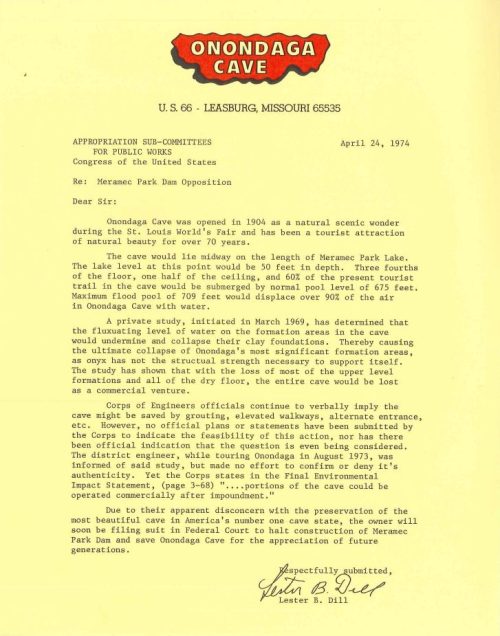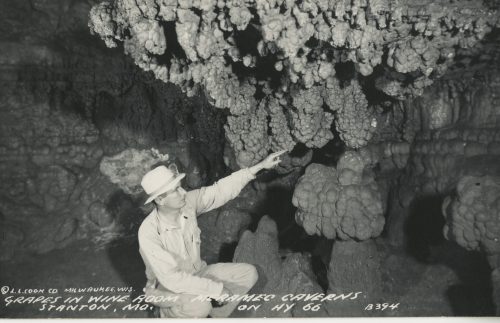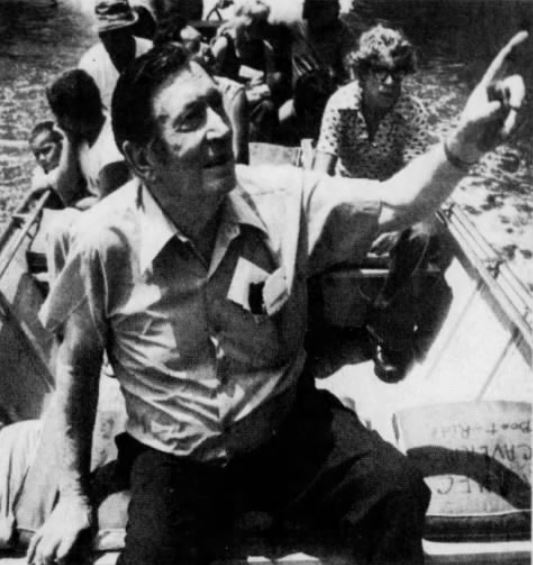
Lester Dill
Introduction
Lester Dill was a promoter and entrepreneur from Missouri. Inspired by his youth spent in the caves of the Meramec River valley, Dill operated businesses at Meramec Caverns, Onondaga Cave, and other caverns. These tourist sites introduced visitors to the underground natural wonders that helped give Missouri its nickname the “Cave State.”
Early Years and Education
Lester Dill was born in St. Louis, Missouri, on November 28, 1898, to Thomas Benton Dill and Laura McCune Dill. He spent his early years in St. Louis, where his father worked as a delivery driver for a dairy company, but by the time he was of school age, the Dills had moved to a farm near Reedville, Missouri.
He attended Reedville School and graduated from Sullivan High School in 1918. After graduation, Dill briefly joined the Student Army Training Corps at the University of Missouri, which prepared young soldiers for World War I through physical training, military instruction, and class coursework. He was honorably discharged from the army when the war ended. He married Mary Hamby in 1920, and then moved around the United States seeking job opportunities, living in Florida and Oklahoma before returning to Missouri.
Meramec State Park
Growing up in Franklin County, Dill had spent his youth exploring the Meramec River valley and the caves that dotted its landscape. His father was a strong advocate for promoting the Meramec River and helped establish Meramec State Park in 1927. As such, the Dills were closely connected with the park, with Thomas serving as park keeper from 1927 to 1933. Lester was a park guide, and Hugh Dill, Lester’s younger brother, served as the park superintendent in the 1950s. As part of his duties, Lester managed Fisher Cave within Meramec State Park. The cave quickly became well known, in part thanks to Lester Dill’s promotion of the legend that it was the location of an inauguration party for Missouri Governor Thomas C. Fletcher during the Civil War.
Meramec Caverns
In 1933, Dill bought Saltpeter Cave from Charles Ruepple. Located near Meramec State Park, Saltpeter Cave was familiar to area residents for its large opening, abundant cavern space, and deposits of saltpeter, a mineral used in food preservatives and in making gunpowder.
Dill renamed the cave Meramec Caverns and offered tours to the public, particularly those traveling on nearby Route 66. He also discovered and explored new sections of the cave, giving them names such as “Stage Curtain,” “Theatre Room,” and “Jesse James Hideout,” the last being a nod to local legend that Jesse James had hidden stolen items from the 1874 Gads Hill train robbery in the cave. In 1950, to draw attention to Meramec Caverns and its ties to the James Gang, Dill paid for an elderly Oklahoma man named J. Frank Dalton—who falsely claimed to be Jesse James—to move into a house on the property and greet visitors.
Onondaga Cave
In 1953, Lester Dill and Lyman Riley bought Onondaga Cave in nearby Crawford County. Much like Meramec Caverns, Onondaga Cave had previously been opened to the public as a commercial cave, but financial troubles after World War II had forced it to close. Under Riley and Dill’s management, Onondaga Cave was turned into a business venture in the model of Meramec Caverns, with tours and programs about its history. While Meramec Caverns claimed to be a hideout for Jesse James’s gang, Onondaga Cave was promoted as having been visited by Daniel Boone. In an effort to tie together his various underground investments, Dill soon established the Crawford County Caverns Company, which managed Onondaga Cave, Meramec Caverns, and other local caves.
Subterranean Empire
By the mid-1950s, Lester Dill had amassed a subterranean empire in the Missouri Ozarks. To promote his business ventures, he embarked on several campaigns to market Missouri’s caves. He was an influential member of the National Caves Association, National Speleological Society, Discover America Travel Organization, and the National 66 Association, which promoted businesses along Route 66.
He also contracted with farmers along major US highways to have advertisements for Meramec Caverns painted on their barns. These murals, as well as other roadside billboards, soon informed travelers about “Daniel Boone’s Discovery,” “Jesse James Hideout,” “Greatest Show Under the Earth,” “The World’s Most Beautiful Cave,” and “The Largest Underground River.” Not satisfied with stationary billboards, Dill had his staff place signs for Meramec Caverns on visitors’ cars while they toured the cave, thus creating an advertisement that traveled with the car.
Ever ready to draw attention to his caves, Dill appeared on television shows like Whom Do You Trust? and To Tell the Truth, and invited celebrities, athletes, and government officials to tour and use the cavernous spaces for official business. He also launched a campaign to get the phrase “Cave State” added to Missouri state license plates. Famously, during the height of the Cold War he offered Meramec Caverns and Onondaga Cave to the federal government as underground bunkers and bomb shelters for Missourians if the state came under attack from nuclear weapons.
Meramec Basin Project
Beginning in the 1930s, the US Army Corps of Engineers developed plans for a system of dams along the Meramec River and other Ozarks rivers that would create a large recreational lake. Initially, Dill supported the project as a way to build local tourism. As the project reached its final phases in the 1970s, however, Dill turned against the plan, arguing that the location of the dams would destroy the natural beauty of the Meramec River valley. He also noted that the lake would flood Onondaga Cave as well as the campgrounds at Meramec Caverns. Dill sued to stop construction of the dams, but in the end it was Missouri voters who defeated the project.
Legacy
Not long after his efforts to stop the Meramec Basin Project, Lester Dill passed away on August 13, 1980. Soon after, his family sold their land in Crawford County to the Nature Conservancy, which transferred it to the Missouri Department of Natural Resources to form Onondaga Cave State Park. To honor his legacy of promoting and protecting Missouri’s caves, the Mississippi Valley-Ozark Region of the National Speleological Society gives the Lester B. Dill Award to a celebrated speleologist from Missouri, Illinois, Indiana, Kansas, Arkansas, or Oklahoma. Meramec Caverns is still owned by the descendants of Lester Dill and is open to the public year-round.
Text and research by Sean Rost
References and Resources
For more information about Lester Dill’s life and career, see the following resources:
Society Resources
The following is a selected list of books, articles, and manuscripts about Lester Dill in the research centers of The State Historical Society of Missouri. The Society’s call numbers follow the citations in brackets.
Articles from the Newspaper Collection
- “Franklin County Park is Paradise of Natural Beauty.” St. Louis Globe-Democrat. March 25, 1928. p. 1s, 6s.
- “Hugh Dill Dies, Chief of Meramec State Park.” St. Louis Post-Dispatch. May 27, 1958. p. 3B.
- “Invites McCarthy, Stevens, Cohn to Be Cave Men.” St. Louis Globe-Democrat. May 30, 1954. p. 14A.
- Kelly, Robert J. “Dam Would Damn Caves, Owner Says.” St. Louis Post-Dispatch. July 30, 1978. p. 11D.
- McGuire, John M. “Les Dill: Operator Who Told Ozark Truth.” St. Louis Post-Dispatch. August 14, 1980. p. 3E, 8E.
- “Meramec Recreation Plugged On TV.” St. Clair Chronicle. March 31, 1960. p. 2.
- “Mustered Out.” The Sullivan News. December 19, 1918. p. 4.
- Sanford, Frank. “Nature’s Nuclear Bomb Shelters.” St. Louis Globe-Democrat. October 7, 1961. p. 6-9.
- Sanford, Robert. “Fanfare of a Cave Man.” St. Louis Post-Dispatch. July 18, 1976. p. 1G, 5G.
- Schacht, Beulah. “‘It Takes Some Hooey To Do It’: A ‘Back Country’ Barnum Packs Hole in Ground.” St. Louis Globe Democrat. August 9, 1959. p. 3F.
- “Thomas Benton Dill.” The Sullivan, MO., News. May 24, 1945. p. 1.
Books and Articles
- Bretz, J. Harlen. Caves of Missouri: Meramec Caverns, Stanton, Missouri. Jefferson City: Von Hoffmann Press, 1956. [REF F548 B756m]
- Powell, Hazel Rowena. Adventures Underground in the Caves of Missouri. New York: Pageant Press, 1953. [REF F548 P871a]
- The Story of Meramec Caverns, Stanton, Mo., The 70,00,000 Year Old Natural Museum of Ancient Oddities. Clayton: Western Press Association, 1945. [REF F548 St76]
- Weaver, H. Dwight. Meramec Caverns: In Legend and History. Missouri: H.D. Weaver & P.A. Johnson, 1995. [REF F548 W379m 1995]
- Weaver, H. Dwight. Meramec Caverns: Legendary Hideout of Jesse James. Jefferson City: Discovery Enterprises, 1977. [REF F548 W379m]
- Weaver, H. Dwight. Missouri Caves in History and Legend. Columbia: University of Missouri Press, 2008. [REF F548 W379mi2]
- Wright, H. Dwight. Onondaga: The Mammoth Cave of Missouri. Jefferson City: Discovery Enterprises, 1973. [REF F548 W379o]
Manuscript Collection
- Lester B. Dill Photograph Collection (P1182)
Six photographs of Meramec Caverns, from the president of the Ozark Cave Association, Inc. - Lynn Morrow Papers (R1000)
The Lynn Morrow papers contain correspondence and research papers, with an additional significant collection of late twentieth-century promotional and advertising items. The papers reflect major areas of Morrow’s research on the southwest Missouri region; Iron, Shannon, and Washington counties; Theodore Pease Russell and his writings; and the writings of Silas C. Turnbo. The collection also includes a large selection of promotional publications and ephemera associated with late 20th century tourism in Missouri and Arkansas.
Outside Resources
These links will take you outside the Society’s website. The Society is not responsible for the content of the following websites:
- Meramec Caverns
This webpage is hosted by Meramec Caverns and contains information about the operations and attractions at Meramec Caverns. - Meramec State Park
This webpage contains relevant information about the history, management, and projects undertaken at Meramec State Park. - Onondaga Cave State Park
This webpage contains relevant information about the history, management, and projects undertaken at Onondaga Cave State Park.

